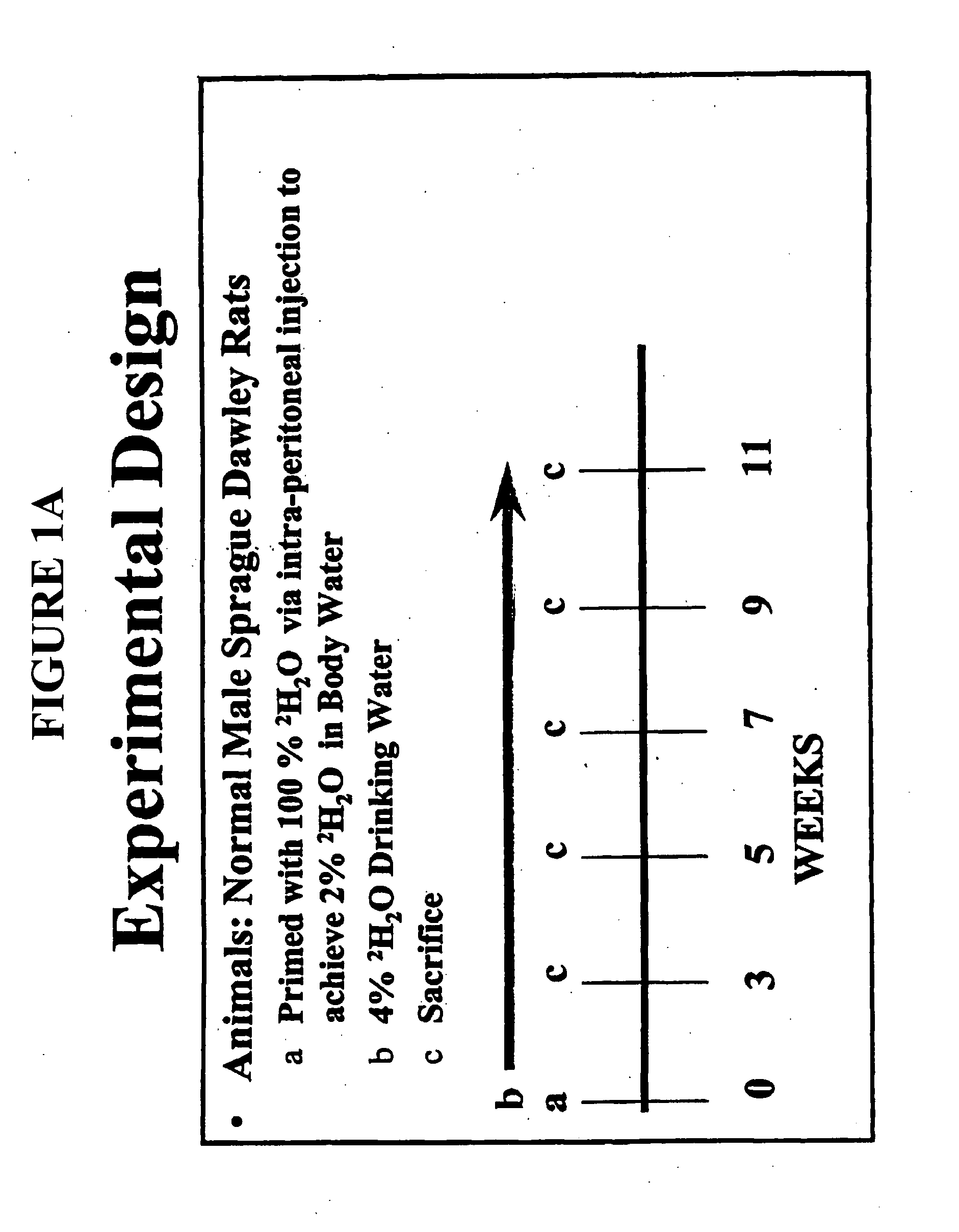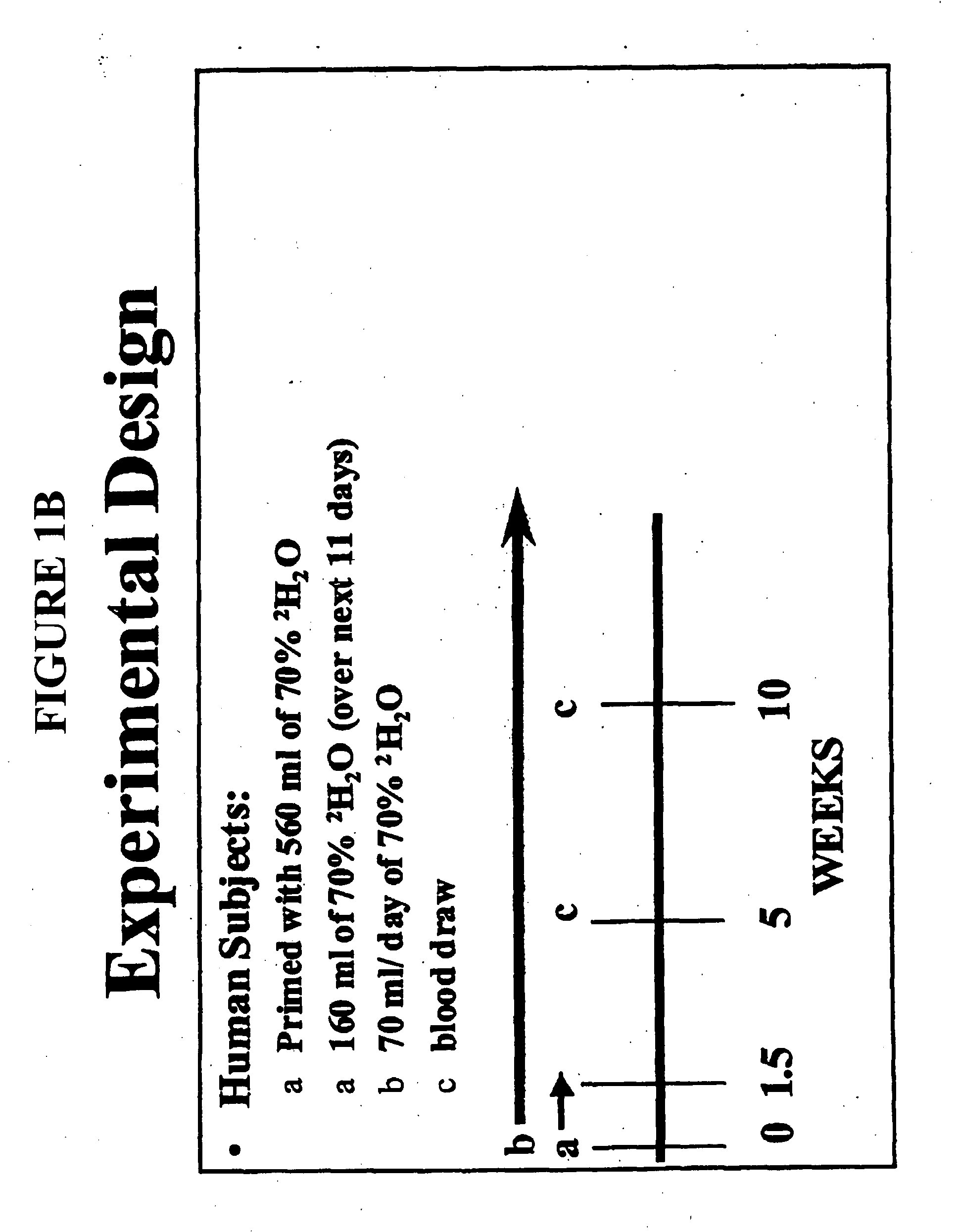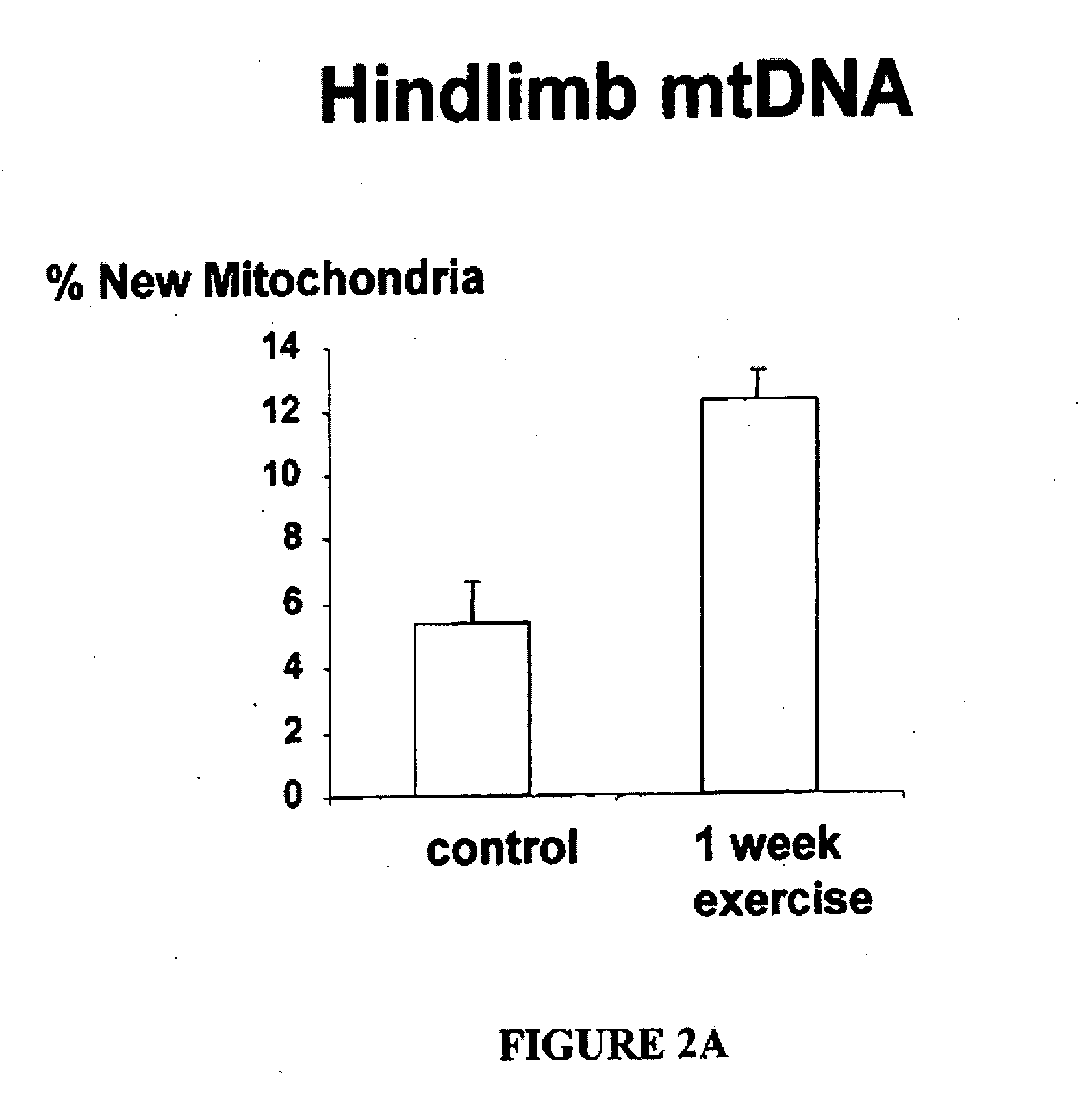Biochemical methods for measuring metabolic fitness of tissues or whole organisms
a biochemical and tissue technology, applied in the field of oxidative biology, can solve the problems of inconsistent physical effort of the patient, difficult to perform, crude and non-biochemical methods for assessing the metabolic fitness of whole organisms, and potential risks associated with this protocol,
- Summary
- Abstract
- Description
- Claims
- Application Information
AI Technical Summary
Benefits of technology
Problems solved by technology
Method used
Image
Examples
example 1
Fractional Synthesis of Mitochondrial DNA in Rats After Isotopically Labeled Water Administration
[0197] The protocol for incorporation of 2H into rat mitochondrial DNA is illustrated in the experimental design of FIG. 1A. Male Sprague Dawley rats from Simonsen, Inc. Gilroy, Calif. were primed with 100% 2H2O via intraperitoneal injection (a) on day zero to achieve 2% 2H2O in body water of the rats. Deuterated water (4% 2H2O) was then administered as drinking water to the rodents for about 10 weeks (b). There were two groups of rats: trained and untrained. The animals were then sacrificed at various timepoints (c), and tissue samples obtained from cardiac and hindlimb muscle. Thereafter, mitochondria were collected by centrifugation and mitochondrial DNA was isolated using ultracentrifugation and biochemical isolation techniques well known in the art (see Collins M L, Eng S, Hoh R, Hellerstein M K. J Appl Physiol. 2003 June; 94(6):2203-11). The DNA was hydrolyzed to free deoxyribonuc...
example 2
Fractional Synthesis of Mitochondrial DNA Isolated From Human Blood Platelets After Isotopically Labeled Water Administration
[0200] The protocol for incorporation of 2H into human mitochondrial DNA from blood platelets is illustrated in the experimental design of FIG. 1B. Human subjects from the General Clinical Research Center of San Francisco General Hospital were primed with 560 ml of 70% 2H2O by drinking 70 mls every three hours over 24 hours (a) at day zero and given 150 ml of 70% 2H2O by drinking 50 mls 3 times a day for about 11 days. A volume of 70 ml / day of 70% 2H2O was then administered by drinking 35 mls 2 times a day for about the next 10 weeks. Blood was drawn at various timepoints (c) and platelets isolated from the samples.
[0201]FIG. 2B shows that enrichment of platelet mitochondrial DNA from deuterated water administration increases with the increasing duration of administration of 2H2O (Collins et al., supra).
example 3
Fractional Synthesis of Mitochondrial DNA and Phospholipids Isolated From Human Muscle Biopsies After Isotopically Labeled Water Administration
[0202] The protocol for incorporation of 2H into human mitochondrial DNA from muscle biopsy samples is illustrated in the experimental design of FIG. 3d. Five human subjects enrolled as out-patients ingested 70 ml of 70% 2H2O three times a day for 5 days then twice a day for 5 days; then ingested 50 ml twice a day thereafter for the remainder of the eight-week study period. Every two weeks, subjects gave a saliva sample (for measurement of body 2H2O enrichment). At week 8, an open muscle biopsy was performed under surgical conditions. Mitochondria were isolated from excised muscle tissue (1 g) by ultracentrifugation, using methods well known in the art. Isolation of mitochondrial (mt) DNA and phospholipids (PL) were by procedures well known in the art. Measurement of fractional synthesis of mt PL was as described in the general methods, supr...
PUM
| Property | Measurement | Unit |
|---|---|---|
| natural abundance | aaaaa | aaaaa |
| time | aaaaa | aaaaa |
| speed | aaaaa | aaaaa |
Abstract
Description
Claims
Application Information
 Login to View More
Login to View More - R&D
- Intellectual Property
- Life Sciences
- Materials
- Tech Scout
- Unparalleled Data Quality
- Higher Quality Content
- 60% Fewer Hallucinations
Browse by: Latest US Patents, China's latest patents, Technical Efficacy Thesaurus, Application Domain, Technology Topic, Popular Technical Reports.
© 2025 PatSnap. All rights reserved.Legal|Privacy policy|Modern Slavery Act Transparency Statement|Sitemap|About US| Contact US: help@patsnap.com



